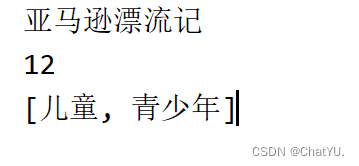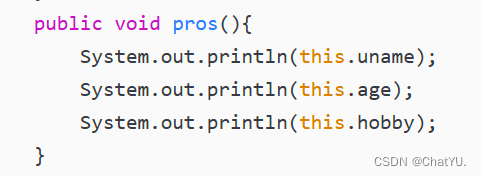三.Spring的注入方式
1.set注入
1.1 准备好Action层,定义好属性,提供get,set方法
package com.YU.ioc.web; import com.YU.ioc.service.UserService; import com.YU.ioc.service.impl.UserServiceImpl1; import java.util.List; /** * @author YU * @create 2023-08-14 18:29 */ public class BookAction { private UserService userService; private String bname;//书名 private int date;//发行日期 private List<String> people;//适用人群 public String getBname() { return bname; } public void setBname(String bname) { this.bname = bname; } public int getDate() { return date; } public void setDate(int date) { this.date = date; } public List<String> getPeople() { return people; } public void setPeople(List<String> people) { this.people = people; } public void pros() { System.out.println(this.bname); System.out.println(this.date); System.out.println(this.people); } public UserService getUserService() { return userService; } public void setUserService(UserService userService) { this.userService = userService; } public String update() { userService.update(); return "list"; } }
2.配置好Xml文件
<bean class="com.YU.ioc.web.BookAction" id = "bookAction"> <property name="userService" ref="userServiceImpl1"></property> <property name="bname" value="亚马逊漂流记"></property> <property name="date" value = "12"></property> <property name="people" > <list> <value>儿童</value> <value>青少年</value> </list> </property> </bean>
3.编写方法,显示是否注入成功
4.测试
package com.YU.ioc.demo; import com.YU.ioc.web.BookAction; import com.YU.ioc.web.UserAction; import org.springframework.context.support.ClassPathXmlApplicationContext; /** * @author YU * @create 2023-08-14 19:16 */ public class Demo1 { public static void main(String[] args) { //处理用户请求时,获取spring上下文对象 ClassPathXmlApplicationContext context = new ClassPathXmlApplicationContext("spring-context.xml"); BookAction bookAction = (BookAction) context.getBean("bookAction"); bookAction.pros(); } }
5.打印结果
显示注入成功
2.构造方法注入
1.准备好Action层,与set注入的不同的是,用的是构造方法注入
package com.YU.ioc.web; import com.YU.ioc.service.UserService; import java.util.List; /** * @author YU * @create 2023-08-14 18:35 */ public class UserAction { private UserService userService; private String uname; private int age; private List<String> hobby; public UserAction() { } public UserAction(String uname, int age, List<String> hobby) { this.uname = uname; this.age = age; this.hobby = hobby; } public void pros(){ System.out.println(this.uname); System.out.println(this.age); System.out.println(this.hobby); } public UserService getUserService() { return userService; } public void setUserService(UserService userService) { this.userService = userService; } public String update(){ userService.update(); return "list"; } }
2.配置XML文件
<bean class="com.YU.ioc.web.UserAction" id = "userAction"> <property name="userService" ref="userService"></property> <constructor-arg name="uname" value="小刘"></constructor-arg> <constructor-arg name="age" value = "18"></constructor-arg> <constructor-arg name="hobby" > <list> <value>打球</value> <value>读书</value> </list> </constructor-arg> </bean>
区别在于用到是construct-arg
3.编写测试方法,判断是否注入成功
4.测试
package com.YU.ioc.demo; import com.YU.ioc.web.BookAction; import com.YU.ioc.web.UserAction; import org.springframework.context.support.ClassPathXmlApplicationContext; /** * @author YU * @create 2023-08-14 19:16 */ public class Demo1 { public static void main(String[] args) { //处理用户请求时,获取spring上下文对象 ClassPathXmlApplicationContext context = new ClassPathXmlApplicationContext("spring-context.xml"); UserAction userAction = (UserAction) context.getBean("userAction"); userAction.pros(); } }
5.测试结果
显示注入成功
3.总结
构造方法注入强调依赖的必需性和不变性,适用于一次性注入全部依赖的情况。
Setter方法注入提供了更大的灵活性,允许在对象创建后动态地注入依赖,适用于需要可选依赖或在运行时修改依赖的情况。
在实践中,可以根据具体需求选择适合的注入方式,甚至可以将构造方法注入和Setter方法注入结合起来使用,以达到更好的灵活性和控制。



